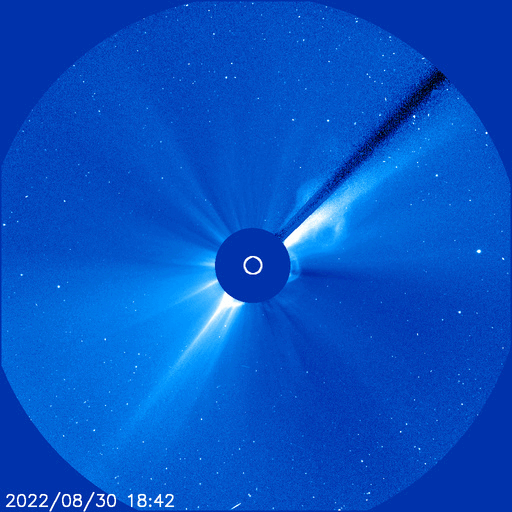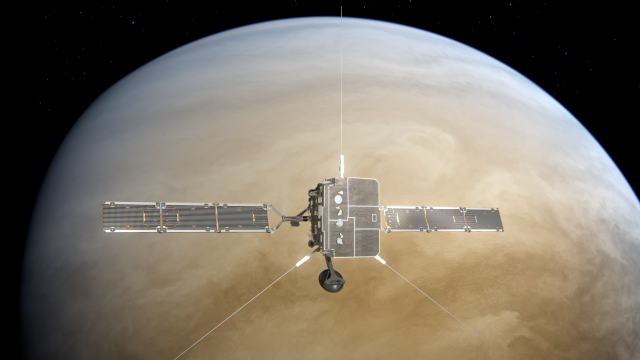Solar Orbiter has been travelling through space for more than two years, making several close flybys of Venus as it steadily inches closer to the Sun. On September 4, the small spacecraft was in the midst of its most recent gravitational assist when it felt the violent wrath of our host star.
The Sun fired off a gigantic coronal mass ejection on August 30, reaching the spacecraft just a few days later. Thankfully, Solar Orbiter is built to withstand these types of temperamental outbursts from the Sun, and it was even able to collect valuable data on solar storms.

Launched in February 2020, Solar Orbiter is a collaborative mission between the European Space Agency (ESA) and NASA. It’s designed to observe the Sun from up close and resolve some of the lingering mysteries about solar wind, the Sun’s magnetic field, and the rather unpredictable space weather. Throughout the course of its decade-long mission, the spacecraft will perform several flybys of Venus to adjust its orbit, bringing it closer to the Sun and out of the solar system plane such that it can peer down at the Sun from a unique vantage point. Solar Orbiter returns to Venus every few orbits around the Sun (one orbit takes around 168 days), but its latest rendezvous with the second planet was unusually eventful.
The Sun frequently produces coronal mass ejections (CMEs), or ejections of plasma that shoot out from the Sun and spread outward through the solar system. CMEs erode the Venusian atmosphere as the solar wave strips the planet of its gases, according to an ESA statement. On August 30, a massive CME shot out of the Sun and headed towards Venus. It reached the planet just as Solar Orbiter was about to make its third close flyby of Venus, with the spacecraft recording an increase in solar energetic particles.
Some of the spacecraft’s instruments had to be turned off during its flyby around Venus, but its scientific instruments were still running, allowing it to collect valuable data on the Sun’s latest outburst. Solar Orbiter is designed to withstand a distance of just 0.27 AU from the Sun’s surface (almost three-quarters of the total distance from Earth to the Sun), where temperatures reach 1,000 degrees Fahrenheit (537 degrees Celsius). The spacecraft has a special black coating that protects it from the Sun’s scorching temperatures. Solar Orbiter will be capable of getting close enough to the Sun to observe its eruptions without being harmed.
Understanding solar flares is crucial for the future of space exploration as space weather can pose serious risks for spacecraft and astronauts venturing off to cosmic destinations.
“Gathering data on events like this is crucial to understanding how they arise, improving our space weather models, forecasts and early-warning systems,” Alexi Glover, ESA Space Weather Service Coordinator, said in the statement. “Solar Orbiter is providing us with an excellent opportunity to compare our forecasts with real observations and test how well our models and tools perform for these regions.”
More: Sun-Orbiting Spacecraft Takes Fascinating Images of a Coronal Mass Ejection
